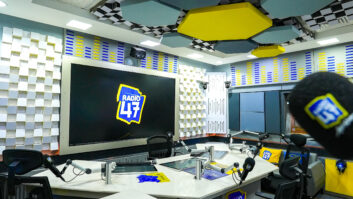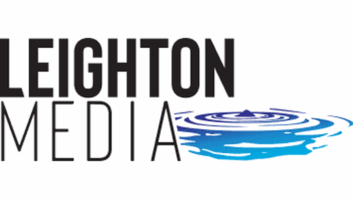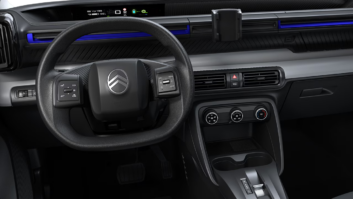Multimedia for Digital Radio
Nov 1, 2010 11:22 AM, By Timothy B. Anderson, CSRE DRB CBNT
Digital radio can deliver exciting new revenue streams to broadcasters by leveraging data and file transfer capabilities that will enhance the listener experience with multimedia elements such as album art, liner and programming notes, news, weather, traffic and sports to broadcasts. Because of its low cost, large footprint and ubiquitous nature, digital radio’s bandwidth may also be made available for subscription services.

Figure 1. The complete audio and data signal flow of the HD Radio system
Data and multimedia capabilities have been designed into all DRB systems, including HD Radio, from the beginning. There are well-defined standards for data and multimedia applications that allow for the development of Application Program Interfaces (APIs) within the transmission and receiver ecosystems. Several HD Radio applications have already been developed and deployed.
An album art application provides the ability to deliver JPEG, GIF and PNG8 images synchronized with audio programming on HD Radio broadcasts. A Software Development Kit (SDK) for receiver partners is available from iBiquity and has already been implemented in new JVC receivers. Clear Channel is currently testing this capability in several markets. This function, now called Artist Experience, was demonstrated by iBiquity at the 2010 Radio Show.
Traffic services provide textual and graphic traffic and transportation system information in standardized transmission protocols. These can be displayed on enabled HD Radio receivers or overlaid on GPS navigational systems equipped with the HD chip set. Clear Channel’s Total Traffic Network and The Broadcast Traffic Consortium provide these services to subscribers in many markets.
Journaline 3, developed by Fraunhofer IIS and deployed by Clear Channel in the United States, provides hierarchically structured information that the user can access on topics of interest in a magazine type format. Menus and text content are encoded in JML (Journaline Markup Language) for transmission to subscribers’ HD Radio receivers.
Electronic program guide (EPG) offers users the ability to navigate, select, and discover content by time, title, channel and genre from an onscreen graphical program guide. IBiquity has developed an EPG data structure and client application specifically for HD Radio. Field trials of the overall EPG ecosystem for U.S. radio broadcasting are now underway, with funding and management provided by the NAB Fastroad program.
Conditional access provides pay-for-play and other restricted access services. The conditional access architecture for HD Radio easily integrates into the HD Radio system. The conditional access unit at the station scrambles the data streams and entitles specific radio receivers to access the content by addressing the receiver’s unique electronic serial number (ESN).
Push radio is another exciting new technology that will send podcasts and other specific information and targeted programming directly to the listener’s digital radio over the air, without the need for an Internet connection. This technology is currently being developed by Beijing Jolon and Commercial Radio Australia for use on the DAB+ system. There is interest in developing this concept for HD Radio.
Data transmission system
The Importer is responsible for multiplexing all of the Advanced Applications Services (AAS), supplemental audio (HD2, HD3, etc.) and data services presented to it by the audio and data clients. The data services are encoded separately from the audio stream via the Radio Linking Subsystem (RLS) and are multiplexed into the Importer to Exporter (I2E) IP stream for transport to the Exporter.
Currently, the HD Radio stream can carry up to four streams of digital audio. The number of simultaneous data streams varies depending on available bandwidth, the data protocol used and the logical channel employed. Consideration must be given to the delivery time requirements of the data and available bandwidth. More bandwidth can be allocated to the data services at the expense of audio service bandwidth if faster delivery and/or larger file sizes are needed.
— Continued on page 2
Multimedia for Digital Radio
Nov 1, 2010 11:22 AM, By Timothy B. Anderson, CSRE DRB CBNT
There are four underlying transport protocols used to encode the data received from a data client prior to application into the RLS transmission stream. When transferring synchronized images, the difference between the packet delivery methods can dictate how far in advance of the associated audio the image must be sent to ensure it is available for display when the associated audio arrives:
� Standard packet encoding encapsulates a predetermined set of bytes received from the client and is best suited for non-real-time applications and file transfers where the file sizes are known and packet encapsulation is fixed by the originating application.
� Flex packet encoding lifts the packet size restriction and allows packet sizes independent of allocated bandwidth and is best suited for non-real time applications.
� Byte streaming protocol simply accepts bytes from the client as they arrive. As the bytes flow into the RLS they are buffered and the transmission system decides how best to break them up into frames based on the allocated bandwidth. Byte streaming is the most efficient method of data transfer and should be considered for custom application development that can provide message management.
� Large Object Transfer (LOT) is an Application Programming Interface (API) that allows a station or service provider to transfer large data objects of any type through the HD Radio transmission system to a receiver equipped with a LOT decoder. Album art applications use the LOT protocol.
A consideration in transmitting audio associated data, whether PSD or album art, via HD Radio is that there is no inherent provision for synchronization of audio with the data services. This makes synchronization of audio and graphics quite unpredictable without some tools and methods of synchronization.
To address this, system latencies are calculated to determine when the data client application needs to start transmission for on-time arrival. The actual presentation time of each image is controlled by including a custom ID3 “trigger” tag that is transported along with the other Program Service Data (PSD) information. Upon receiving this trigger tag, the receiver executes the appropriate command to provide display synchronization with the audio content.
Receivers
Special application software is needed on the receiver side when presenting multimedia data to the user. This software is used to decode and present a specific type of data. Standards are defined as to how the data is structured and transported, and how it is to be decoded and presented by applications within the host processor. These specific applications reside on the receiver’s host processor.

Figure 2. The two components of an HD Radio receiver are the baseband processor and the host porocessor.
There are two primary components in an HD Radio receiver: The baseband processor and the host processor. RF signals are received by a fairly conventional tuner which provides a 10.7MHz IF signal to the IF processor, where it is demodulated into digital I and Q baseband signals. The digital I/Q are de-multiplexed into audio and data streams, and audio is sent to the audio decoder for conversion to an audio output for amplification. All data is sent separately to the RLS decoder, where it is reformatted back into the original structure and sent to the host microprocessor. Here, the appropriate application prepares the data for presentation.
The host microprocessor contains the application software to initiate the necessary interaction with the various applications. The LOT decoder (if present) reformats any LOT data received and sends it to the RLS decoder prior to processing.
While displays and capabilities vary, the necessary hardware for these advanced data multimedia applications already exists in most of the current generation HD Radio receivers. It is up to the receiver manufacturers to develop the host micro applications to make these new features available. This is where most of the development work needs to take place to provide media-rich content and data services over digital radio broadcasts.
Anderson is manager, radio transmission strategic market and product development, Harris, Mason, OH.
November 2010
Choosing a computer audio interface, a tour of the CBC/Radio-Canada’s upgrade, multimedia for digital radio, calculating STL fade margin and more….







